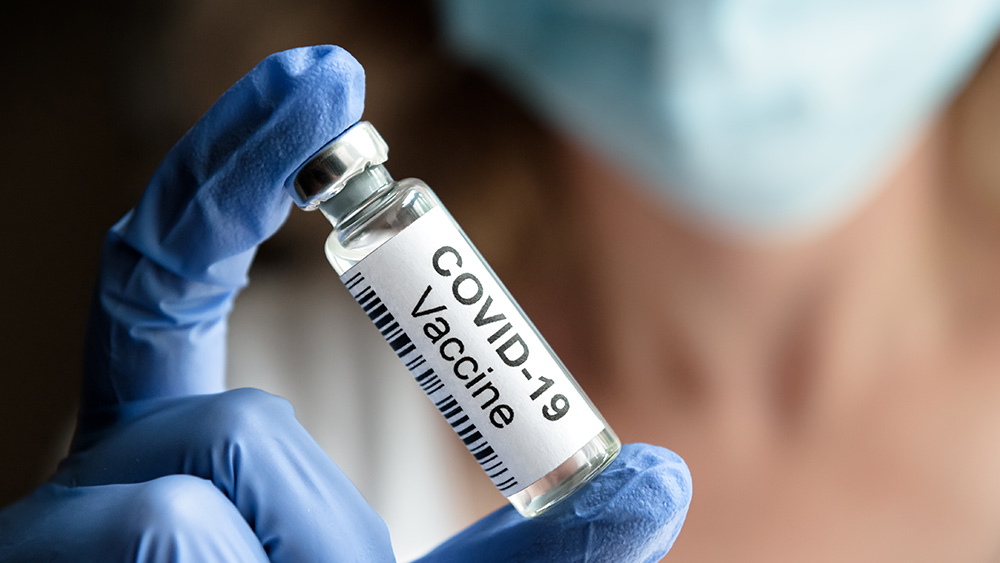HORROR: Forbes tells cancer patients to get TWO doses of damaging high-dose flu vaccine
12/08/2015 / By Julie Wilson

Forbes is pushing a dangerous flu vaccine on cancer patients, recommending they get not only one, but TWO doses in order to reduce their risk of contracting the flu. However, vaccinating the sick can have dire consequences, especially when one DOUBLES the dose of an already “high-dose” vaccine.
Even in healthy people, vaccines pose a wide range of medical risks, including neurological damage, learning disabilities, ADHD, food allergies, autoimmune disorders and more. These risks are heightened when given to those already suffering from ailments.[1]
Forbes, which is notorious for being pro-vaccine and pro-chemicals without ever disclosing related health effects, is encouraging cancer patients to get two doses of a high-dose flu vaccine called Fluzone, which has been tied to discomfort, headaches, muscle aches and pain.
Forbes pushing controversial flu vaccine in DOUBLE DOSES for cancer patients
Designed for those 65 years and older, Fluzone contains four times as much microbial antigens, or the lab altered flu virus, as regular flu shots, causing the body to produce antibodies to the three different flu strains found in the vaccine. However, even the US Centers for Disease Control and Prevention admits that whether or not the Fluzone High-Dose creates an improved immune response is yet to be determined.[2]
Forbes’ article titled “Double The Dose of Flu Vaccines Helps Cancer Patients Dodge The Flu” cites a new study that supposedly “found a way to reduce the risk of flu to myeloma cancer patients” using Fluzone.[3]
Ironically, the study’s author, Dr. Madhav Dhodapkar, admits that vaccines aren’t very effective for cancer patients, specifically those with myeloma, because their immune systems “have poor responses.” Yet, based on an extremely small trial, researchers suggest that giving cancer patients two doses of Fluzone High-Dose, one month apart, can increase the patients’ rate of protection against the flu from 4-19 percent to 33 percent.
Flu vaccines cause more harm than all other vaccines combined
Forbes reports:
“In research presented at the annual meeting of the American Society of Hematology in Orlando, Florida, Dhodapkar and his colleagues showed that only 4% of 51 patients with plasma cell disorders developed lab-confirmed influenza during a season when they received two doses, a month apart, of the Fluzone high-dose vaccine, manufactured by Sanofi Pasteur. The expected rate of flu illnesses would have been 20% in a typical year.
“Because the trial was small and did not include a comparison (control) group, what we can conclude from it is limited, and there’s no guarantee [emphasis added] that it was the vaccine that led the flu infection ate [sic] to be so low for a change.”
Additional data collected by researchers on 30 multiple myeloma patients’ immune system response found that 33 percent of cancer patients participating in the study “tested positive for titers (antibody levels) for all three vaccine strains.”
Fluzone High-Doses cause more adverse reactions than regular flu shot, says CDC
Even if that’s accurate, when weighed against the risks often caused by flu vaccines, a 33 percent protection rate is hardly worth it.
“Annual flu vaccines historically kill and injure more people than any other vaccine, with no close seconds,” reports Health Impact News. “In fact, according to the U.S. Government Department of Justice reports on vaccine injuries and deaths submitted each quarter, more awards are issued as compensation for flu vaccine injuries and deaths than all the other vaccines on the market combined.”[4]
View the latest report from June 2015 here.
Regarding the Fluzone High-Dose, when administered in just one dose to healthy people, the vaccine caused more “adverse health events” than regular flu vaccines, according to the CDC.
“The safety profile of Fluzone High-Dose vaccine is similar to that of regular flu vaccines, although adverse events (which are also reported after regular flu vaccines) were reported more frequently after vaccination with Fluzone High-Dose.
“The most common adverse events experienced during clinical studies were mild and temporary, and included pain, redness at the injection site, headache, muscle aches, and malaise.”
Sources:
[1] Vaccines.gov
[2] CDC.gov
[3] Forbes.com
[6] Vaccines.gov
Submit a correction >>
Tagged Under:
cancer, CDC, flu shot, Fluzone, Forbes
This article may contain statements that reflect the opinion of the author
RECENT NEWS & ARTICLES
Vaccines.News is a fact-based public education website published by Vaccines News Features, LLC.
All content copyright © 2018 by Vaccines News Features, LLC.
Contact Us with Tips or Corrections
All trademarks, registered trademarks and servicemarks mentioned on this site are the property of their respective owners.





















